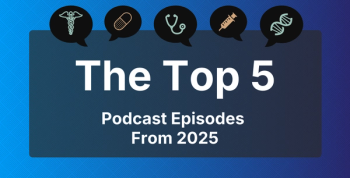
Abstracts Highlight the Efficacy of BCL-2 Inhibitors in AML and CLL
Two abstracts reviewed venetoclax, the first FDA-approved BCL-2 inhibitor in acute myeloid leukemia (AML) and a novel BCL-2 inhibitor to treat chronic lymphocytic leukemia/small lymphocytic lymphoma (CLL/SLL).
The gene encoding B-cell lymphoma-2 (BCL-2) is highly expressed in many hematological malignancies, making it a promising target. Two abstracts presented at the
Adding venetoclax to cladribine (CLAD) and low-dose ARA-C (LDAC) and alternating with azacitidine provides a highly effective, low-intensity regimen for older patients or patients unfit for intensive chemotherapy with newly diagnosed AML.1 Researchers from The University of Texas MD Anderson Cancer Center reported on results of a phase 2 study investigating the combination alternated with azacytidine, with composite complete response (CRc) rate as the primary end point. Overall survival (OS), disease-free survival (DFS), overall response rate (ORR), and toxicity were the secondary end points.
The median age of the 93 patients included in the study was 68 years, with 28 patients 70 years or older and 1 patient who was younger than 60 years but considered unfit for intensive chemotherapy. The CRc rate was 92%, with 78% of patients having a CR and 14% of patients having CR with incomplete count recovery as best response. Furthermore, 5% of patients had no response and 2% of patients died.
A majority (84%) of patients achieved minimal residual disease (MRD) negativity during the study. Of patients with TP53-mutated disease, the CRc rate was 88% (86% achieving MRD negativity) and of patients with NPM1-mutated disease, the CRc rate was 96% (100% MRD negative). In addition, 41% of responders went on to receive allogeneic stem cell transplantation.
With a median follow-up of 22.8 months, the median duration of response, median DFS, and median OS were not reached. The estimated 24-month duration of response was 81.0% (95% CI; 71.0%-92.4%), DFS was 63.4% (95% CI; 52.1%-77.1%), and OS was 68.3% (95% CI; 58.1%-80.1%).
The researchers concluded that this regimen was well tolerated among older patients, but additional study of the regimen in older patients is needed.
Authors of a second abstract reviewed preliminary data of a phase 1 study of a novel inhibitor, BGB-11417, either alone or in combination with zanubrutinib in patients with CLL/SLL.2 Although venetoclax also is approved for CLL/SLL, BCL2 mutations can result in resistance to the therapy, the authors explained.
The study included 2 cohorts: 6 patients who received monotherapy and 44 patients who received the combination with zanubrutinib. In the cohorts, patients received escalating doses (40 mg, 80 mg, 160 mg, 320 mg, or 640 mg once a day) of BGB-11417. In the monotherapy cohort, patients only received up to 160 mg daily, whereas patients in the combination cohort received up to 640 mg daily. Patients with treatment-naïve CLL only received up to 320 mg daily. In the combination cohort, patients also received either zanubrutinib 320 mg once a day or 160 mg twice daily. The zanubrutinib dose was initiated 8 to 12 weeks prior to starting BGB-11417.
The median follow-up was 11.5 months for monotherapy and 5.8 months for the combination. The maximum tolerated dose had not yet been reached for any CLL cohort.
The early results indicated the improved potency of BGB-11417 vs venetoclax, the researchers noted. Most patients had reductions in absolute lymphocyte count (ALC), and responses were seen at doses as low as 1 mg. In the monotherapy cohort, 66% of patients had a partial response or better. In the combination cohort, 72.7% of patients had a partial response with lymphocytosis or better.
The most common treatment-emergent adverse events in the monotherapy cohort were cytopenias. The most common in the combination cohort were contusion, neutropenia, and low-grade gastrointestinal toxicity. No patients discontinued monotherapy and only 1 patient discontinued combination therapy.
“Mature MRD data are forthcoming, and venetoclax-treated CLL/SLL cohorts will soon be open for enrollment,” the authors noted.
References
1. Reville PK, Kantarjian H, Borthakur G, et al. Venetoclax added to cladribine (CLAD) + low dose AraC (LDAC) alternating with azacytidine (AZA) is highly active as frontline therapy in older patients with newly diagnosed acute myeloid leukemia in a phase 2 study. Abstract presented at: 64th ASH Annual Meeting & Exposition; December 10-13, 2022; New Orleans, LA. Abstract 4074. Accessed December 19, 2022. https://ash.confex.com/ash/2022/webprogram/Paper168029.html
2. Cheah CY, Tam CS, Lasica M, et al. A phase 1 study with the novel B-cell lymphoma 2 (Bcl-2) inhibitor Bgb-11417 as monotherapy or in combination with zanubrutinib (ZANU) in patients (Pts) with CLL/SLL: preliminary data. Abstract presented at: 64th ASH Annual Meeting & Exposition; December 10-13, 2022; New Orleans, LA. Abstract 962. Accessed December 19, 2022. https://ash.confex.com/ash/2022/webprogram/Paper169662.html
Newsletter
Stay ahead of policy, cost, and value—subscribe to AJMC for expert insights at the intersection of clinical care and health economics.








































